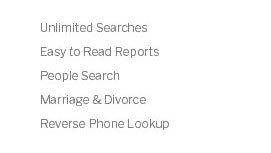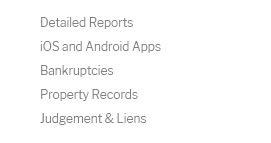 |
 |
|---|
|
|
|---|
 |
 |
 |
 |
|---|---|---|---|
 |
 |
 |
|
 |
|||
 |
 |
 |
|
 |
|||
 |
 |
 |
|
 |
|||

|
2zx5h7msj8t Understanding Personal Public Records SearchIn today's digital age, the ability to access information with the click of a button is not only convenient but also essential for various personal and professional purposes. One area where this is particularly pertinent is the realm of personal public records search. While the term might evoke images of privacy invasion or unwarranted snooping, understanding its purpose and how it operates can demystify this often misunderstood process. Firstly, it is crucial to comprehend what constitutes public records. These are documents or pieces of information that are not considered confidential. They can include a wide range of data such as birth and death certificates, marriage and divorce records, property deeds, court records, and more. The key characteristic of these records is their availability to the general public, although the ease of access can vary significantly depending on the jurisdiction and the type of information. The importance of public records cannot be overstated. They play a vital role in ensuring transparency and accountability within governmental operations. Moreover, they are instrumental for individuals seeking information for genealogical research, background checks, or legal proceedings. However, the process of accessing these records can often seem daunting to those unfamiliar with it. Therefore, a step-by-step guide to conducting a personal public records search can be incredibly beneficial. Step 1: Identify the Information Needed - Before diving into the search, it is essential to clearly define the specific information you are seeking. Are you looking for a birth certificate, a property deed, or perhaps a court judgment? Knowing exactly what you need will streamline the search process. Step 2: Determine the Appropriate Source - Public records are typically maintained by various governmental agencies, each responsible for a specific type of record. For instance, birth and death certificates are usually held by the Department of Health, while property records might be found at the local county recorder's office. Identifying the correct agency is crucial for efficient searching. Step 3: Choose Your Method of Search - There are several ways to conduct a public records search. One can visit the relevant government office in person, use their online databases, or employ third-party services that specialize in aggregating public records. Each method has its advantages and limitations. In-person visits can offer more comprehensive assistance but may be time-consuming, while online searches are convenient but may not always be free. Step 4: Verify and Cross-Check Information - Once the records are obtained, it's important to verify their accuracy. Public records can sometimes contain errors, and cross-referencing with other sources can ensure the information's validity.
In conclusion, while a personal public records search may seem complex, understanding its purpose and following a structured approach can make the process manageable and rewarding. By leveraging these records ethically and responsibly, individuals can access a wealth of information that serves both personal curiosity and professional necessity. https://michigancourtrecords.us/public-records/
Criminal records contain various information about an individual, including their name, physical description, charges, arrest records, booking, and case ... https://www.michigan.gov/msp/services/chr
ICHAT allows the search of public criminal history record information maintained by the Michigan State Police, Criminal Justice Information Center.
|
|---|